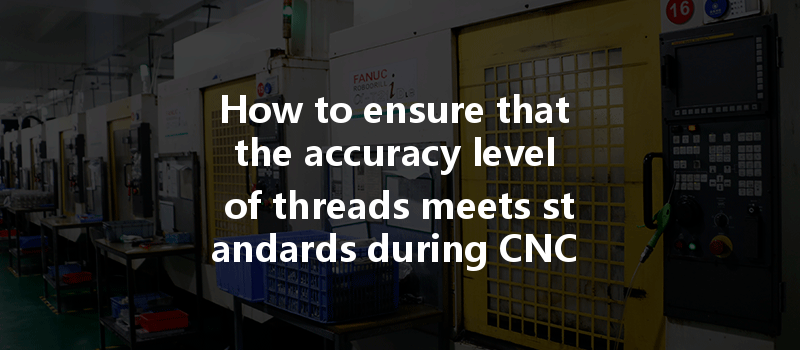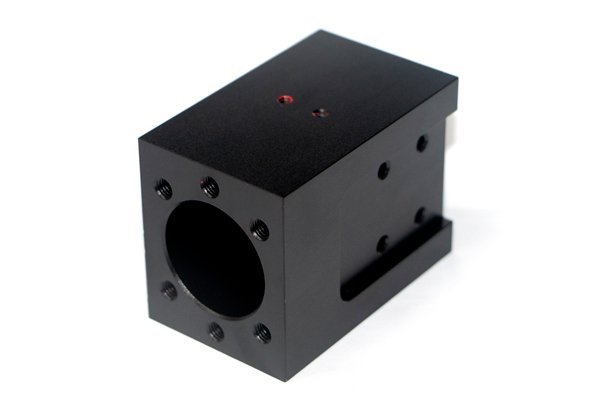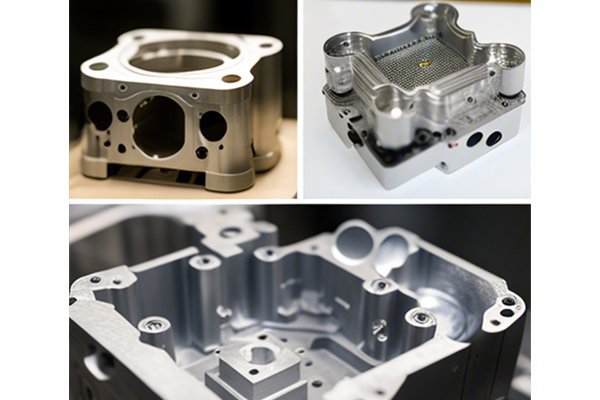Did you know that approximately 70% of all mechanical failures can be traced back to poor thread integrity? This statistic highlights the critical importance of ensuring that threads maintain high accuracy during CNC machining. Threads connect and secure components in everything from intricate machinery to everyday consumer products. When machined inaccurately, these threads can lead to failure in applications where reliability is paramount.
Ensuring thread accuracy in CNC machining isn’t just a technical challenge; it’s a gateway to enhancing product quality, reducing costs, and elevating overall operational efficiency. This blog will provide a comprehensive guide on the critical factors contributing to thread accuracy during CNC machining, along with practical solutions to achieve optimal results. By the end of this article, you will have a thorough understanding of how to maintain thread integrity, ensuring that your machined components will function as intended.
Understanding Thread Standards and Measurements
Before diving into the methodologies for ensuring thread accuracy, it’s crucial to understand the importance of thread standards and measurements used in CNC machining.
Thread Standards
The most commonly used standards for threaded fasteners include:
Using the appropriate thread standard is vital in ensuring that components will fit together properly and function as intended.
Key Measurements in Threads
When assessing the accuracy of threads, several key measurements are evaluated:
Accurate measurement of these parameters ensures the threads align and fit together correctly.
Factors Affecting Thread Accuracy in CNC Machining
Several factors can impact the accuracy of machined threads. Understanding these variables and how to control them is essential for achieving optimal results.
Importance of Choosing the Right Tool
The type of cutting tool plays a crucial role in thread accuracy. Tools that are worn, damaged, or inappropriate for the material can lead to inaccuracies.
Recommended Tools
Regular Calibration
The CNC machine must be calibrated regularly. Misalignment or deviations can lead to inaccuracies in thread formation.
Calibration Techniques
The material being machined significantly impacts thread accuracy. Different materials behave differently under machining conditions, influencing tool wear and thread integrity.
Recommendations Based on Material Type
The Role of Coolants
Using the appropriate coolant can significantly impact thread creation. Lubrication helps to control temperature, reduce friction, and extend tool life.
Effective Coolant Practices

Many methods exist for cutting threads in CNC machining. Understanding each method’s strengths and weaknesses can help you choose the best approach for your specific needs.
Tapping
Tapping creates internal threads by displacing material. The feeding rate and rotational speed are crucial for maintaining accuracy.
Thread Milling
This method uses a rotating tool to cut threads progressively. It is highly versatile, allowing for different thread profiles and pitch.
Detecting Wear
Measuring tool wear can help in preemptively addressing issues before they compromise thread accuracy. Monitoring software can help identify wear patterns.
Regular Tool Inspection
Incorporating a regular inspection routine will assist in ensuring tools remain within tolerances.
Best Practices for Ensuring Thread Accuracy
Now that we have identified the key factors affecting thread accuracy, let’s explore best practices to enhance precision during CNC machining.
In-Process Inspection
Conducting inspections during the manufacturing process helps identify thread inaccuracies early. Use calipers, micrometers, and thread gauges to verify measurements.
Final Inspection
Conduct a final inspection using gauges specific to thread standards. This step ensures compliance with ISO or UTS standards.
Optimizing speed, feed rates, and depth of cut can lead to higher-quality threads. Experiment with different parameters to find the sweet spot for the material and tooling used.
CNC programming and simulation software can visualize and analyze machining paths and processes prior to production. This approach can optimize tools and parameters before actual machining begins.
Using high-quality tool sets can significantly affect the thread’s integrity and accuracy. While investing in premium tools may be higher upfront, it saves costs associated with errors and rework down the line.
Train machinists in best practices and new technologies. Proper training ensures that operators understand the importance of thread accuracy and how to achieve it.
Ensure that employees are familiar with relevant thread standards and their implications in the overall machining process, from design to production.
Properly maintained machines consistently yield better results. Schedule regular maintenance and repairs to avoid sudden malfunctions.
Addressing Common Challenges in Thread Accuracy
Despite carefully following the best practices for achieving thread accuracy, challenges may still arise.
Different batches of the same material may exhibit varying properties. Trial runs with small quantities can help optimize settings.
Sometimes, even high-quality tools fracture unexpectedly. Monitoring and data collection can help analyze and prevent future occurrences.
Temperature fluctuations in the workshop can affect machining operations. Maintaining a stable environment can help ensure consistent results.
In summary, ensuring the accuracy of threads in CNC machining is vital for the proper functioning of mechanical assemblies. By focusing on the right tools, careful calibration, material selection, and effective cooling strategies, machine operators can significantly enhance their thread accuracy. In addition, implementing quality control measures, optimizing machining parameters, utilizing simulation software, investing in high-quality tools, ensuring staff training, and conducting regular maintenance can further improve the integrity of machined threads.
As this blog illustrates, improving thread accuracy does not just prevent costly reworks; it also enhances the overall quality of the final product. This topic is worth pondering for anyone in the machining field, as thread integrity can oftentimes be the differentiator between success and failure in manufacturing operations. By applying these best practices and remaining vigilant about the factors affecting thread accuracy, you can ensure that your CNC machining processes fulfill the highest standards.
Remember, the bottom line of precision engineering lies in attention to detail—especially when it comes to the threads that bind our advancements together.






